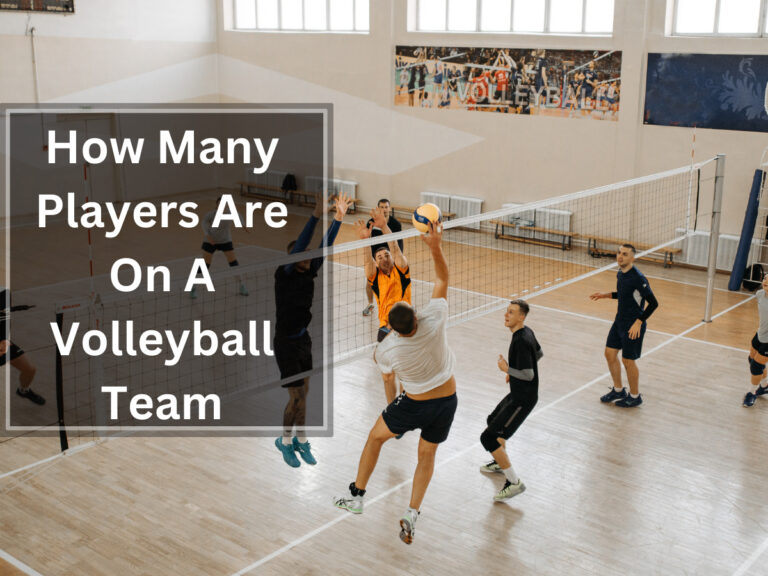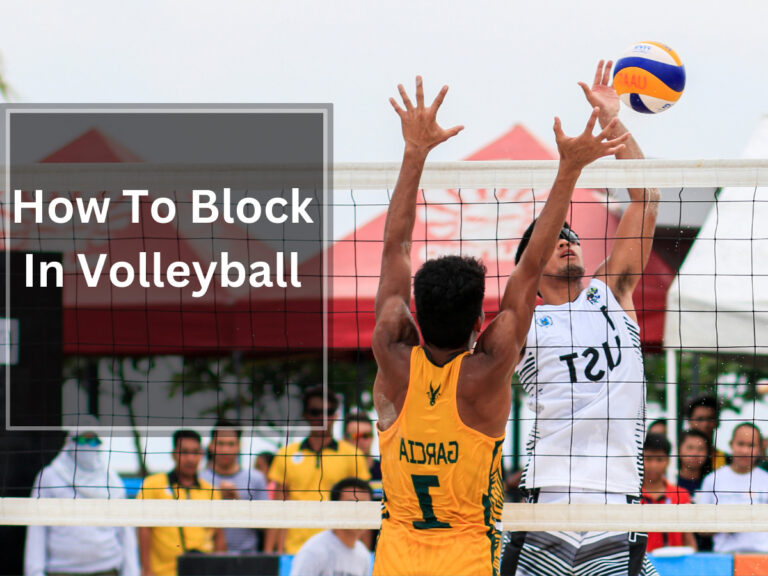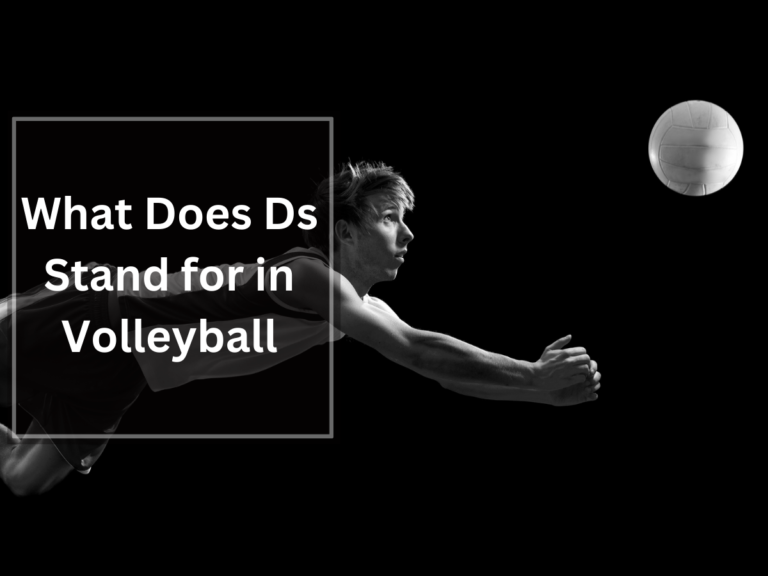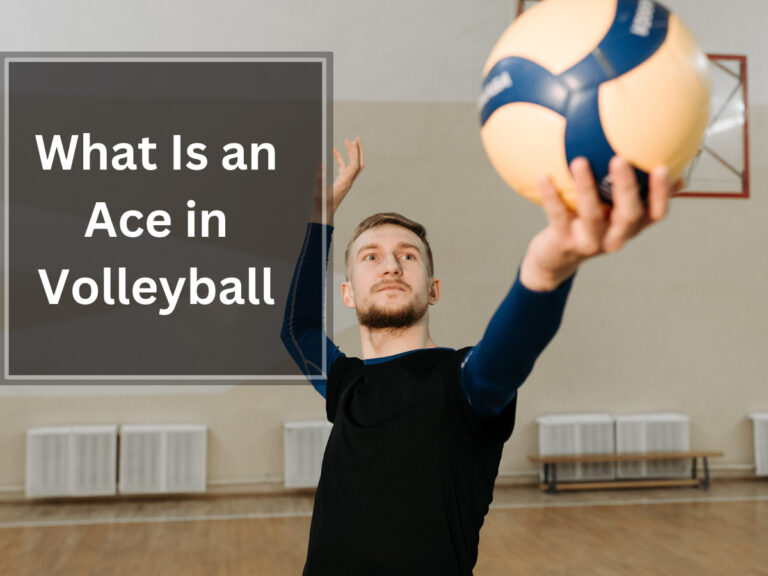Volleyball Positions and Their Role in Game

Are you ready to dive into the exciting world of volleyball positions? Well, get ready because we’re about to break it down for you.
Volleyball positions are like puzzle pieces that come together to create a winning team. Each position has its own unique set of skills and responsibilities that contribute to the overall success of the team.
From the setter who orchestrates the offense with their precise setting, to the outside hitter who attacks from the left side, and the libero who excels in passing and defense, each player plays a crucial role on the court.
It’s a game of strategy, athleticism, and teamwork. So whether you’re a seasoned player or just starting out, understanding these positions will give you an edge on the court.
Get ready to find your place in this thrilling sport and join a team where you truly belong.
Table of Contents
What are the volleyball positions
In volleyball, there are several key positions that play important roles in a team’s success. These positions include the Outside Hitter, Middle Hitter, Opposite Hitter, Setter, and Libero.
The Outside Hitter is responsible for attacking from the left side of the court and plays a crucial role in serve reception.
The Middle Hitter runs quick attacks through the middle of the court and is often the tallest player on the team.
The Opposite Hitter attacks from the right side of the court and primarily focuses on blocking and attacking.
The Setter orchestrates the team’s offense and communicates with teammates.
The Libero specializes in back row passing and defense.
Understanding these positions is essential for comprehending how each player contributes to their team’s performance.
Outside Hitter
The outside hitter is a dynamic force on the volleyball court, utilizing their lightning speed to bump, spike, and dive. As an outside hitter, your role is crucial in both offensive and defensive strategies.
Offensively, you are responsible for attacking from the left side of the court and serve as the go-to attacker. Your smart decision-making and athletic abilities are vital in executing successful offensive plays.
Defensively, you play a key role in serve reception and receive second balls when plays break down. Your reliable performance and good passing skills contribute to the team’s overall success.
With your ability to hit hard and transition quickly from defense to attack, you provide a well-rounded skill set that makes you an invaluable asset to your team’s lineup.
Middle Hitter
As a middle hitter, you become the unstoppable force in the middle with lightning speed and powerful attacks. Your role is crucial in offensive strategies, as you have the ability to block the opposing team’s attack and execute quick attacks through the middle. By acting as a decoy, you create confusion for the defense and open up opportunities for your teammates on the wings.
However, being a middle hitter also comes with its challenges. One common mistake is lacking court awareness, which can lead to poor positioning and missed opportunities. Another challenge is maintaining consistent timing and precision in your attacks.
Despite these challenges, your impact as a middle hitter cannot be underestimated. You are an integral part of any successful volleyball team.
Opposite Hitter
As an opposite hitter, you have the power to dominate the right side of the court with your explosive attacks and strategic blocking. Your attacking strategies are crucial in creating scoring opportunities for your team.
Here are three key aspects that make the opposite hitter position exciting:
Varied attack angles: As an opposite hitter, you can attack from different angles on the right side of the net. This catches the opposing team off guard and opens up scoring opportunities.
- Back row responsibilities: In addition to your attacking role, you also have important responsibilities in the back row. You must be a reliable passer during serve receive and contribute defensively by digging balls attacked by the opposing team’s outside hitter.
- Blocking against outside hitters: One of your main defensive tasks is to shut down the opposing team’s outside hitter. Your strong blocking skills come into play here, as you aim to disrupt their attacks and limit their effectiveness.
Overall, as an opposite hitter, you play a vital role in both offense and defense. You make strategic decisions to maximize your team’s success on the court.
Setter
The setter plays a crucial role in the team’s offense. They use accurate hand signals to guide their teammates and set the ball with precision. Their main focus is on creating opportunities for their teammates to score points by effectively distributing the ball. The setter must have strong leadership skills and excellent communication abilities to lead their team on the court.
In addition to their offensive responsibilities, the setter also contributes to the team’s defense. They coordinate with the libero, a defensive specialist who takes command of the back row. The libero helps with serve reception and making defensive plays. Together, the setter and libero form a strong partnership that contributes to both offensive and defensive success.
Libero
Now that you have a good understanding of the setter position, let’s dive into the role of the libero.
The libero is a defensive specialist who plays a crucial role in passing and defense. This player often wears a different colored jersey to distinguish themselves from other players on the court.
The libero is responsible for making accurate passes during serve receive, making them an essential part of a team’s offensive strategy. They are also quick and agile, allowing them to cover a large portion of the court efficiently.
One of their main responsibilities is to make defensive plays, including digging hard-driven spikes from the opposing team’s hitters.
In addition to their defensive skills, liberos can also step in as an accurate setter when needed. Their ability to steal passes from other players contributes greatly to their team’s success in transitioning quickly from defense to offense.
Overall, the libero position requires excellent defensive skills, agility, accuracy in passing, and quick decision-making abilities.
Middle Blocker
Additionally, the middle blocker position requires strong footwork and quick reaction times due to the lack of athleticism and technical prowess. Middle blockers specialize in blocking, utilizing their height advantage to shut down opponent’s attacks.
At the junior level, middle blockers may lack court awareness and have poor passing and digging skills. To improve, it is crucial for middle blockers to focus on developing these skills through practice and training.
Another important aspect of the middle blocker’s role is coordinating joint blocking with wing players. This involves effective communication and timing to create an impenetrable wall at the net.
Weaknesses in joint blocking can be detrimental to the team’s defense, so it is essential for middle blockers to work closely with their teammates to develop strategies for effective joint blocking.
Defensive Specialist
One unusual thing about the role of a Defensive Specialist (DS) is that they can substitute for any player in any position on the court. This makes them a versatile asset to the team, as they can step in and assist in high-pressure situations.
The Defensive Specialist has similar skills as a Libero, but without the different colored jersey. They are known for their reliable passing and defensive abilities, making them an essential part of the team’s sideout.
A good Defensive Specialist performs well under pressure and excels at making accurate and agile passes. They also have a knack for making scramble defensive plays and effectively covering the court.
Their ability to contribute to both offense and defense makes them a valuable member of the team alongside other specialized positions like Setter or Middle Blocker.
Serving Specialist
To fully understand the strategic role of a Serving Specialist, it is important to consider their rare and advantageous position on the court.
The Serving Specialist is a controversial position in volleyball, often subbed in for their strong serving abilities. While uncommon at non-professional levels, this role can be extremely advantageous in certain situations.
Here are four key points to highlight the importance of a Serving Specialist:
- Securing a set: A Serving Specialist is ideal for securing crucial points through powerful serves that put pressure on the opposing team’s defense.
- Dealing with strong servers or weak defenders: By substituting in a Serving Specialist, teams can better handle strong servers or exploit weak defenders on the other side of the net.
- Reliable passing or blocking: Once their serving duty is fulfilled, a Serving Specialist can provide reliable passing and blocking skills to contribute to the team’s overall performance.
- Uncommon but strategic role: While rarely seen outside professional levels, having a designated player focused solely on serving can give teams an edge and add depth to their gameplay.
It’s important to note that while a Serving Specialist plays an essential role, the Libero still holds great importance in volleyball games due to their expertise in back row passing and defensive playmaking.
Frequently Asked Questions
How many players are typically on a volleyball team?
On a volleyball team, the number of players can vary, but typically there are 6 players on the court at a time. The team size impacts strategy as it determines which positions are filled and how substitutions are made.
Are there any specific height requirements for each position?
Each volleyball position has different physical attributes and height requirements. Middle blockers are typically the tallest players on the team, while liberos tend to be shorter. Other positions have varying height preferences based on their roles and responsibilities.
Can players switch positions during a game?
Yes, players can switch positions during a game. Effective position switching requires strategic planning and coordination among teammates. It allows for flexibility in adapting to the opponent’s tactics and maximizing each player’s strengths.
Are there any restrictions on the number of players that can play in each position?
There are no specific restrictions on the number of players that can play in each position in volleyball. The best position for a player is determined by their height and skills that align with the responsibilities of that position.
Are there any specific rules or guidelines for the libero position?
The libero position in volleyball is like having a superhero on your team. They have specific rules and guidelines that allow them to excel in their role as the team’s defensive specialist. Their responsibilities include digging, passing, and leading the backcourt defense.
Conclusion
In conclusion, understanding the different volleyball positions is crucial for a successful team. Each position brings unique skills and responsibilities to the game.
The setter’s leadership on offense is essential for coordinating the team’s attacks and ensuring accurate setting. They play a vital role in determining the flow and tempo of the game, making them a key player on the court.
The libero, on the other hand, specializes in passing and defense. They are responsible for receiving the opponent’s serves and making accurate passes to set up their team’s offense. Their defensive skills are also crucial in digging and receiving powerful spikes from the opposing team.
One fascinating statistic that highlights the importance of these positions is that teams with strong setters have been found to win 75% more matches than those without skilled setters. This emphasizes the critical role of accurate setting in determining a team’s success.
This statistic should inspire players to train diligently in this aspect of their game. By honing their setting skills, players can greatly contribute to their team’s success and increase their chances of winning matches.
In summary, each volleyball position plays a unique role in the team’s overall performance. Understanding these positions and the skills they require is crucial for players to excel and contribute effectively to their team’s success.










